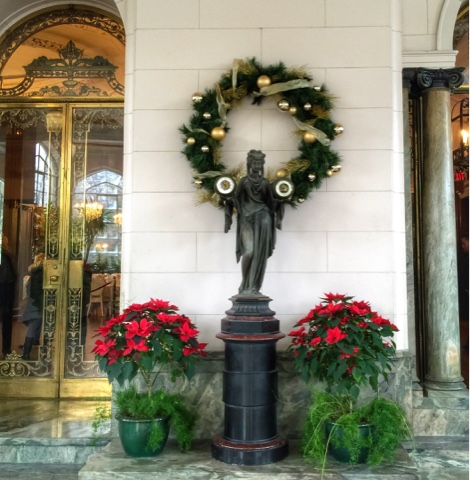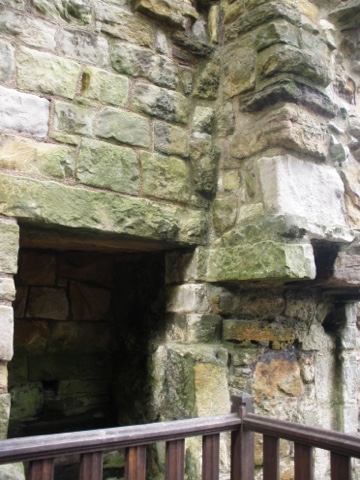Casa Loma, The House on the Hill, is a Gothic Revival castle in Toronto. In 1903, Sir Henry Pellatt purchased 25 lots of land from developer Kertland and Rolf. Pellatt, a financier and soldier, was born in Kingston, Ontario in 1859. He married society lady Mary Dodgson in his twenties. Pellatt commissioned Toronto-based architect E.J. Lennox to design Casa Loma. Lennox had already designed some of Toronto's notable buildings, including the Old City Hall.
Construction on Casa Loma began in 1911. The building took three years to complete, with three hundred workers involved in its construction. The Hunting Lodge, stables and potting shed were built first. Pellatt resided in the Hunting Lodge while the stables became the construction site. At a cost of 3.5 million dollars, the house had 98 rooms, 52 phones, an elevator, a central vacuum system, secret passages, a pool, a bowling alley, and a stove big enough to cook an ox in. The biggest private residence in Toronto, Casa Loma measures 64,700 sq ft ( 6,011m sq).
After WWI, during the depression, Ontario increased Casa Loma's annual property taxes from $600 a year to $1000 a month. The already struggling Pellatt was thus forced to sell art work and furnishings. In 1923, before a decade had passed, Pellatt had to leave Casa Loma.
The castle was abandoned until the late 1920s, when it was used as a luxury hotel and attracted wealthy Americans escaping prohibition. When the property failed to pay its taxes in 1933, the city took Casa Loma over. By then in a rundown state, the city considered demolishing the castle. In 1937, the castle received a reprieve, and The Kiwanis Club of West Toronto, later of Casa Loma, began to run the castle as a tourist destination.
During WWII, as tourists walked through the castle, Casa Loma was used as a top-secret sonar research and construction centre to assist in the detection of German U-Boats. For 74 years, until 2011, the Kiwanis Club continued to manage Casa Loma. The tenure suffered a few controversies in its time, including a bid made by the great-grandniece of Pellatt, Trelawney Howell, to open tender of the property.
$33 million-worth of renovations, taking over 15 years, occurred to the facade of Casa Loma between 1997 and 2012. The restorations were largely funded by the City of Toronto. Following a failure on the part of the Kiwanis Club of Casa Loma to help pay for upgrades on the castle, despite having agreed to do so, the city resumed temporary management of Casa Loma. The city opened bids to the private sector and, in January 2014, the Liberty Entertainment Group entered a long-term lease. The lease involved a promise to spend $7.4 million on the continued restoration of the castle. A popular tourist destination now, as well as being used as the setting for many feature films and TV series, Casa Loma is also a venue for social gatherings and weddings.
Since the 1930s, there have been reports of paranormal activity at Casa Loma. The most reported sighting is of the White Lady, believed to be a maid who worked at the castle and died in the influenza epidemic that killed around 60,000 people in Toronto. Lady Mary Pellatt has been spotted walking the grounds, and a former gardener has been sighted tending plants in the conservatory. Sir Henry Pellatt himself has reportedly been seen wandering around the castle. He is most often seen at his desk. A dark shadow allegedly walks across the Casa Loma library floor. The sound of children has been heard in the castle when no children were present. One of the most notorious ghosts of Casa Loma haunts the tunnels that lead to the stables. Believed to be the ghost of one of Sir Henry's friends that was hired to look after his prized horses, the apparition reportedly pulls people's hair and tugs at their clothes.
I have visited Casa Loma a few times, and always enjoy seeing this magnificent building. It truly is like a castle in the middle of a very modern city. I had two strange experiences at Casa Loma. One happened in a room that, unbeknownst to me, was a favourite haunt of Lady Pellatt. I was taking photographs and let the camera drop from my view just in time to be peripherally aware of a figure in the room. What was strange is that the room is a cordoned-off display and, of course, there was no-one actually there. I have tried several times to go through the tunnel that leads from the castle to the stables, but each time I have just felt "uncomfortable" and decided against it...there is a strange feeling down at the mouth of the castle tunnel, and it's not a welcoming one.
Casa Loma is a beautiful place to spend a few hours just marvelling at its glory.





















































